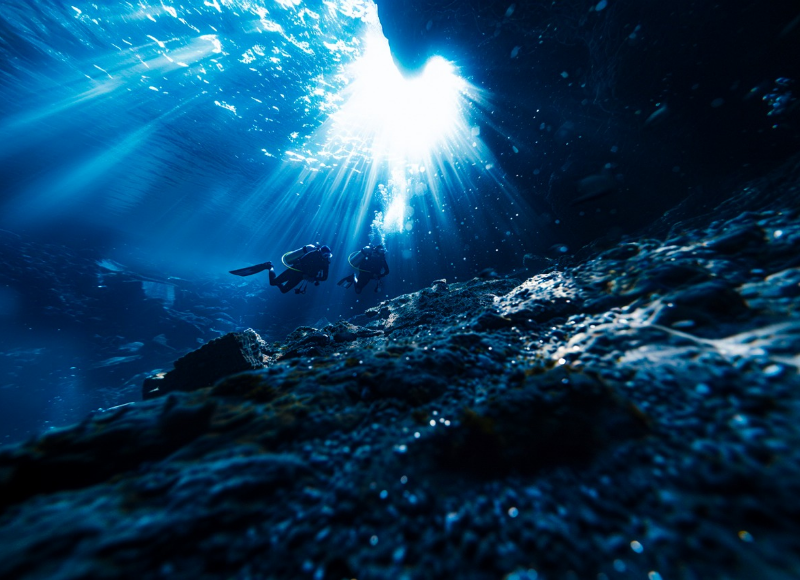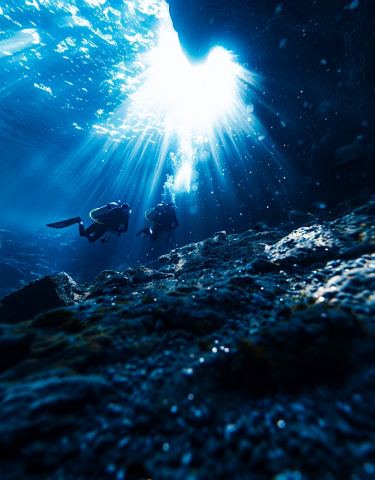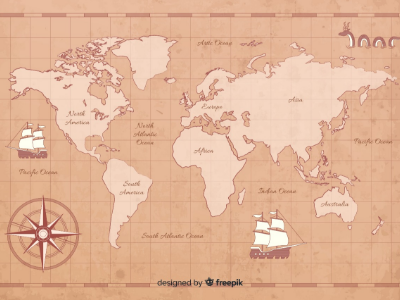Introduction
The oceans, covering over 70% of the Earth’s surface, are a realm of immense economic and strategic importance, holding vast reserves of energy, minerals, and biological resources. For decades, human exploration and maintenance of subsea infrastructure—from oil and gas pipelines to telecommunications cables and offshore wind turbines—have been an expensive, dangerous, and time-consuming endeavor, heavily reliant on human divers and large, crewed vessels. The advent of unmanned underwater vehicles (UUVs), also known as underwater drones, marks a transformative shift. These robotic systems, ranging from small, agile Remotely Operated Vehicles (ROVs) to sophisticated Autonomous Underwater Vehicles (AUVs), are revolutionizing marine inspections.
However, this technological leap is not without its perils. While UUVs reduce human challenges, they introduce complex risks such as technical risk, operational risk, and financial risk. This blog explores the nascent field of autonomous marine inspections through a risk mitigation lens.
Identifying the risks involved in Marine Inspections
The deployment of UUVs for marine inspection tasks is fraught with an array of risks. This makes robotic risk assessment a crucial step of inspection plans.
Operational Risks
- Unstable currents, low visibility, and acoustic interference can compromise navigation systems, leading to mission failure.
- UUV missions are often limited by battery life. A sudden, unexpected power failure in a remote location can result in the loss of assets.
- The harsh underwater environment, with its high pressure, corrosive saltwater, and bio-fouling, can cause rapid degradation of sensors, thrusters, and communication systems. The failure of a single critical component can jeopardize the prospects of success in the mission.
Environmental Risks
- Despite advanced sensors, UUVs operate in a dynamic, often murky environment. Risks include collision with submerged objects (wrecks, rocks), marine life, or other infrastructure.
- Adverse weather can make deployment and recovery of UUVs extremely hazardous, risking damage to both the drone and the support vessel.
- The marine environment also poses risks of water ingress or short-circuits.
Data and Technology Risks
The data gathered by UUVs—including high-resolution imagery, sonar scans, and sensor readings—is often proprietary and critical. Risks include –
- Cybersecurity risk from data corruption during transmission and unauthorized access, which could compromise the integrity of the inspection.
- Bugs, algorithmic errors, or a failure to adapt to unforeseen conditions, resulting in damage to the drone or the infrastructure being inspected. A “runaway” drone is a major risk.
- Loss of the acoustic or radio communication link with the support vessel can render an ROV uncontrollable or an AUV unable to transmit critical data or return to its recovery point.
Financial Risks
- The high capital cost of advanced UUVs makes their loss a significant financial blow.
- A UUV could inadvertently damage critical subsea infrastructure, leading to massive financial liability and potential legal action.
Reputational Risks
- A high-profile UUV failure or an incident causing environmental harm can severely damage a company’s reputation, affecting its ability to secure future contracts.
Risk Mitigation in Marine Robotics operations
Risks in marine robotics operations can be mitigated by –
- Designing UUVs with redundant thrusters, power supplies, and communication systems. This prevents single-point failures from causing mission loss. Dual navigation systems, such as a combination of Inertial Navigation Systems (INS) and Doppler Velocity Logs (DVL), can ensure accuracy even in low-visibility conditions.
- Implementing Internet of Things (IoT) sensors on critical UUV components to monitor their health in real-time can ensure predictive maintenance. This reduces the risk of in-mission breakdowns as components are replaced before they fail drastically.
- Training AI and machine learning algorithms to analyze data streams from UUVs to reduce operational risks arising from a human operator’s failure to detect anomalies. For instance, AI could identify a subtle change in thruster vibration or a slight deviation in power consumption, signaling an impending failure.
- Using Multi-Beam EchoSounders (MBES) and Synthetic Aperture Sonar (SAS) for high-resolution imagery regardless of water clarity. This mitigates navigation and data collection risks.
- Preparing a comprehensive pre-mission plan that includes detailed surveys of the area, analysis of currents, and a thorough assessment of potential environmental hazards. A meticulous pre-dive checklist is crucial to verify the operational readiness of all systems.
- Maintaining a detailed contingency plan that includes protocols for communication loss, emergency recovery procedures for a disabled UUV, and procedures for handling data corruption ensures a smooth flow of operations.
- Appointing a human operator to monitor UUV missions. This ensures immediate corrective action in case of an unforeseen event. This hybrid approach combines the efficiency of automation with the adaptability and decision-making capacity of human intelligence.
Risk Monitoring
Effective risk management is a continuous process. Once mitigation strategies are in place, risk monitoring becomes paramount. This involves the continuous tracking of identified risks and the performance of mitigation controls.
- UUVs should stream a continuous feed of operational data, including battery health, system temperature, thruster performance, and sensor readings.
- Post-Mission Analysis – After each mission, a detailed debrief should be conducted. Data from the UUV’s black box—including operational logs and sensor data—should be analyzed to identify any near misses or unexpected events that could be indicative of a systemic vulnerability.
- The entire risk management framework should be reviewed periodically (e.g., quarterly) to account for changes in technology, operational environments, and regulatory requirements.
Application of Risk Management Frameworks
The challenges of underwater robotics can be effectively addressed by adopting an Enterprise Risk Management framework like the ISO 31000 standard or the COSO framework.
- ISO 31000: This framework provides a structured approach to managing risk, guiding organizations through the processes of establishing a risk management policy, identifying and analyzing risks, and treating them. For UUV operations, this would involve creating a specific risk register for each type of mission (e.g., pipeline inspection, search and rescue) and regularly reviewing it.
- COSO: This framework emphasizes the integration of financial risk management into an organization’s strategy and performance. For a marine-robotics company, this means that risk is considered not just a compliance issue but an integral part of business decisions, from research and development (R&D) investment in new UUV technology to the pricing of a marine inspection contract.
Risk Management Lessons for Indian Marine-Robotics Companies
India’s burgeoning marine and coastal economy presents a significant opportunity for the development of indigenous UUV technology. Indian companies can understand risk management in marine robotics and learn valuable lessons from global pioneers in this field:
Establish a Risk Culture – Companies like Norway’s Equinor have a long history of operating in hostile marine environments. Their success is built on a non-negotiable safety-first culture that treats risk management as a core value, not a regulatory burden. A similar culture must be instilled from the outset, prioritizing robust engineering and meticulous operational planning over speed to market.
- Invest in Robust Systems – The initial cost of a UUV is only one part of the equation. As seen with leading UUV developers such as Kongsberg Maritime (Norway) and Teledyne Marine (USA), the long-term cost of ownership, which includes maintenance, resilience, and reliability, is far more critical. The temptation to cut corners on quality to reduce costs must be resisted as a single asset loss can wipe out any savings.
- Prioritize Data as a Strategic Asset – Companies like Fugro (Netherlands) have successfully transitioned from providing just inspection services to offering actionable data and insights. The data collected by UUVs should be viewed not just as a byproduct of the inspection but as a strategic asset. Investing in data analytics and secure data management can create new revenue streams and provide a competitive edge.
- Leverage partnerships to access best practices in risk management – Firms can accelerate their learning curve by partnering with international technology providers and research institutions. Joint ventures and technology transfer agreements can provide access to cutting-edge technologies and best practices in risk management.
Conclusion: Charting a Course for a Resilient Future
The future of marine exploration and maintenance lies beneath the waves, in the hands of autonomous robotics. While UUVs promise to be a safer, more efficient, and cost-effective alternative to traditional methods, their widespread adoption hinges on our ability to effectively manage their associated risks.
For India, a nation with a vast coastline and growing maritime ambitions, the adoption of UUVs is not just an opportunity but a necessity. By embedding a proactive, risk-centric mindset into the very fabric of their operations, Indian marine-robotics companies can navigate the complexities of marine risk. The ultimate success of underwater robotics will not be measured by the sophistication of the technology alone, but by the resilience of the systems and the foresight of the people who deploy them.















